Nothing symbolizes the American West like the towering saguaro cactus. The iconic cacti are only found in a small portion of the United States and nowhere are they more impressive than at Saguaro National Park. During our December 2021 travels to the Tucson area, we spent a day hiking in each of the park’s two districts.

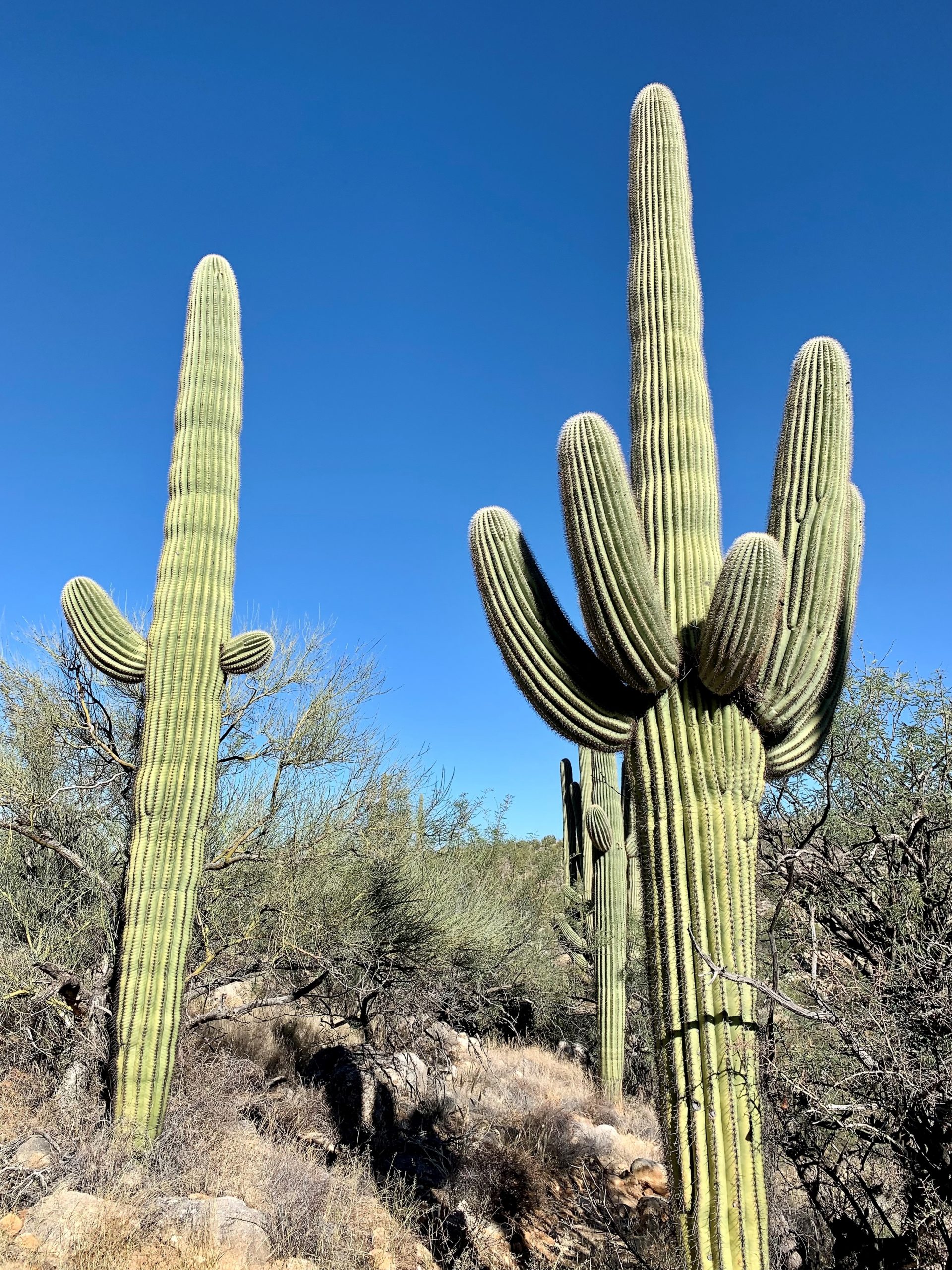

One Park, Two Districts
Saguaro National Park has two districts which are geographically separated by the city of Tucson, the Rincon Mountain District (Saguaro East) and Tucson Mountain District (Saguaro West). In total, the park encompasses 91,327 acres and it takes roughly 45-60 minutes to drive between the two districts (click here for directions). In our opinion, it would not be enjoyable to attempt a visit to both districts in one day. Allow a minimum of one day per district for an introductory visit.

While similar in terms of plants and animals, the two districts feel distinctly different. Saguaro West is the smaller of the two districts. It is also the more popular and is noticeably busier. It has a higher saguaro density, younger saguaro forest, and sits at lower elevations with scrub and desert grassland. Saguaro East is more than twice as large, has an older saguaro forest, and sits at higher elevations with scrub/desert grassland, oak/pine-oak woodland, and pine/mixed conifer forest.
| East (Rincon Mountain District) | West (Tucson Mountain District) |
|---|---|
| Acreage: 67,476 | Acreage: 25,391 |
| Picnic Areas: 2 | Picnic Areas: 5 |
| Loop Drive: 8 miles paved | Loop Drive: 5 miles, gravel |
| Camping: 6 backcountry sites | Camping: None |
| 128 miles of hiking trails | 43 miles of hiking trails |
| Highest Point: Mica Mt 8,666 ft ^2 | Highest Point: Wasson Peak 4,687 ft ^2 |
| Opened: 1933 | Opened: 1961 |
| Older saguaro forest, higher elevations including scrub/desert grassland, oak/pine-oak woodland, pine/mixed conifer forest. | Higher saguaro density, younger saguaro forest, and lower elevation including scrub and desert grassland. |


Each district has its own visitor center that provides restrooms, water fountains, maps, programs, and staff to assist you. Generally, both districts are open from around sunrise to sunset (click here for hours). Both visitor centers are open daily from 9-5 except on Thanksgiving and Christmas Day. Horseback riding and bicycling are allowed in limited areas of both districts (click here for more information). Park fees are as follows: entering on foot, bicycle or horseback $15, by motorcycle $20, by private vehicle $25, or Saguaro National Park Annual Pass $45.

Together, Saguaro National Park’s two districts offer more than 165 miles of hiking trails. Whether you want a short stroll along an interpretive nature trail or an overnight wilderness trek, you’ll find the perfect hike here. Each district has its own hiking guide and map which can be found here. I recommend studying these ahead of time to find the best option for you. The Desert Ecology Trail and Mica View Trail in the Rincon District and the Desert Discovery Trail in the Mountain District are ADA accessible. Like the other National Parks in southern Arizona, Saguaro offers an I Hike for Health Pin—we earned a pin for our day hiking at Saguaro East.
For those wanting to experience Saguaro from the comfort of their car, each district has a scenic loop drive. At Saguaro East, the Cactus Forest Scenic Loop Drive is an 8 mile, paved, combination one- and two-way road. At Saguaro west, the Scenic Bajada Loop Drive is a 6 mile, unpaved, combination one- and two-way graded dirt road. Both offer access to trailheads and scenic vista pullouts. Parking is limited and trailers longer than 35 feet or any vehicle wider than 8 feet are not permitted on either loop.
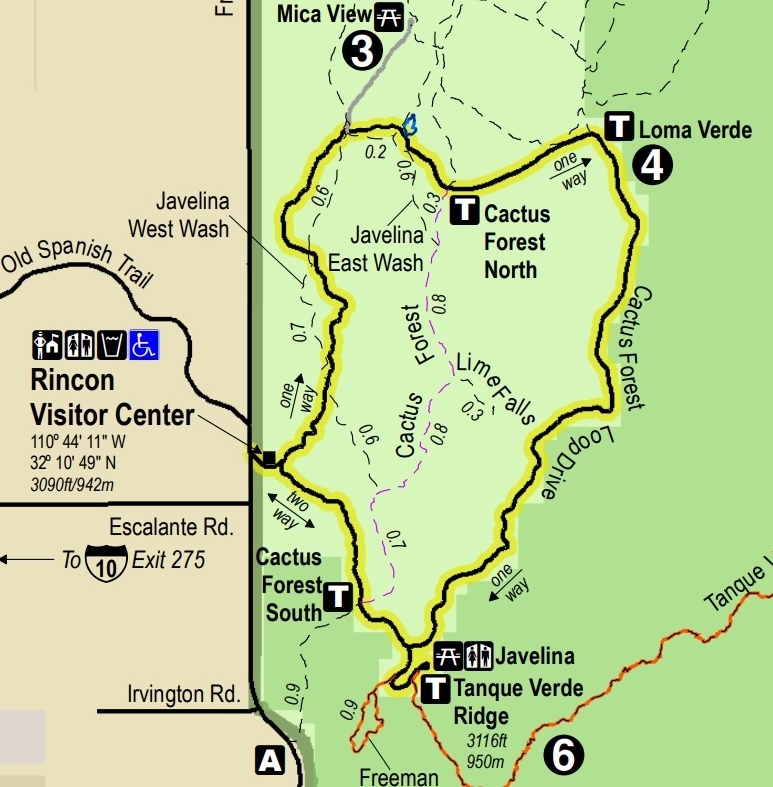
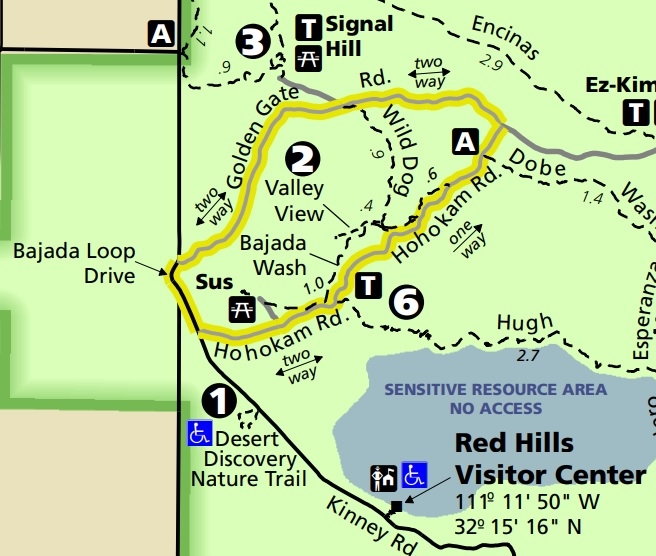
Be sure to pack a picnic lunch for your visit to Saguaro National Park. While both districts are located on the outskirts of Tucson, there are few amenities and services inside the park. There are no concession stands, snack/soda machines or restaurants. Additionally, there is no Wifi available at either district. Cell phone reception is poor and fluctuates depending on your specific location.

Fun & amazing saguaro facts:
- The name is pronounced “Sa – WAH – ro”.
- The tallest saguaro ever recorded was 78 ft tall but fell down in 1986.
- Saguaros only grow in parts of the Sonoran Desert, one of four deserts found in the U.S. Their range is limited by elevation and freezing winter temperatures.
- Saguaros are a very slow growing cactus, growing just 1-1.5 inches in the first eight years of its life.
- Young saguaro are typically found under the protection of a nurse tree, most often a palo verde, ironwood or mesquite.
- Branches normally begin to appear when a saguaro reaches 50-70 years of age. In areas of lower precipitation, it may take up to 100 years before arms appear.
- An adult saguaro is generally considered to be around 125 years of age. It may weigh 6 tons or more and reach 50 feet in height. The average life span is 150-175 years, but it is believed some may live over 200 years.
- By the time a saguaro is four feet tall its roots have been growing for as many as 55 years and they stretch out four feet from the main stem in all directions, and three to five inches deep. The roots have special hairs on them that enable the collection of up to 200 gallons of water during a rainfall.


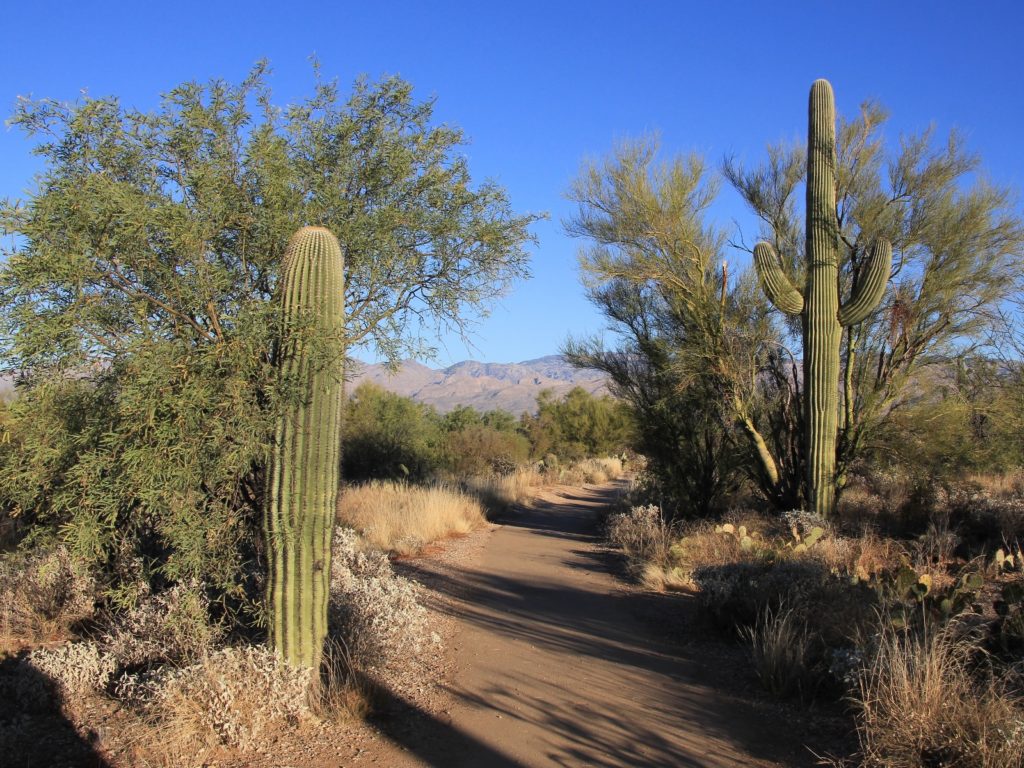
Our Visit to the Rincon Mountain District (Saguaro East)
With 128 miles of hiking trails and just one day to visit, it was clear we were only going to see a small fraction of the Rincon Mountain District during our December 2021 visit. We wanted to drive the Cactus Forest Scenic Loop Drive and it was most convenient to select from the many trails that begin off that. We parked at Mica View and hiked an easy 6.3 mile lollipop loop by combining the Mica View, Cactus Forest, and Lime Falls trails. This provided us with nice views of the Rincon Mountains and some interesting history as we strolled through the park’s Cactus Forest.
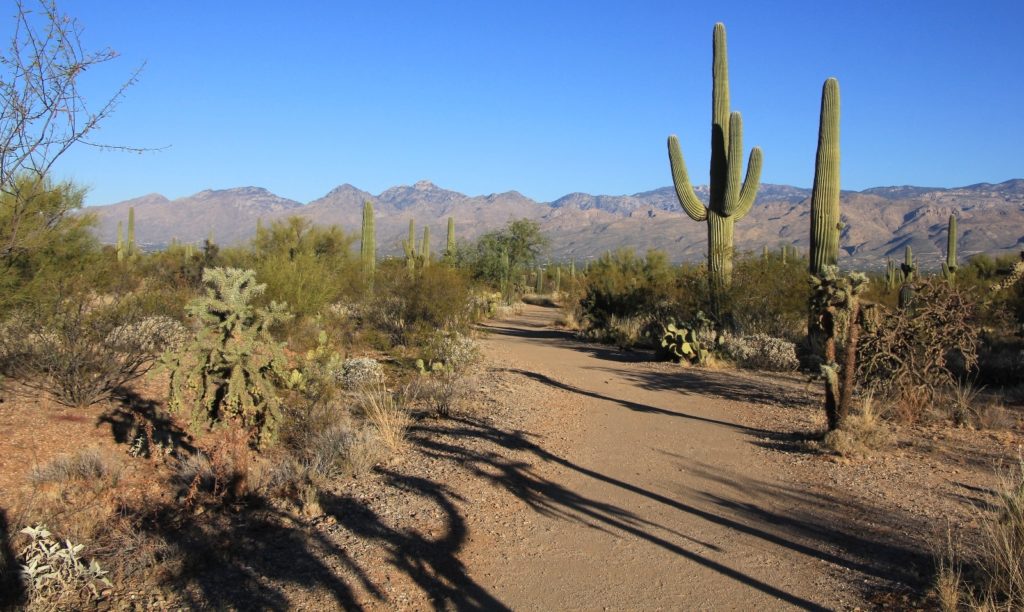
Saguaro National Park is home to 25 species of cactus with the most common being saguaros (naturally), fishhook barrel, staghorn cholla, hedgehog, Engelman’s prickly pear, teddybear cholla, and chainfruit cholla.



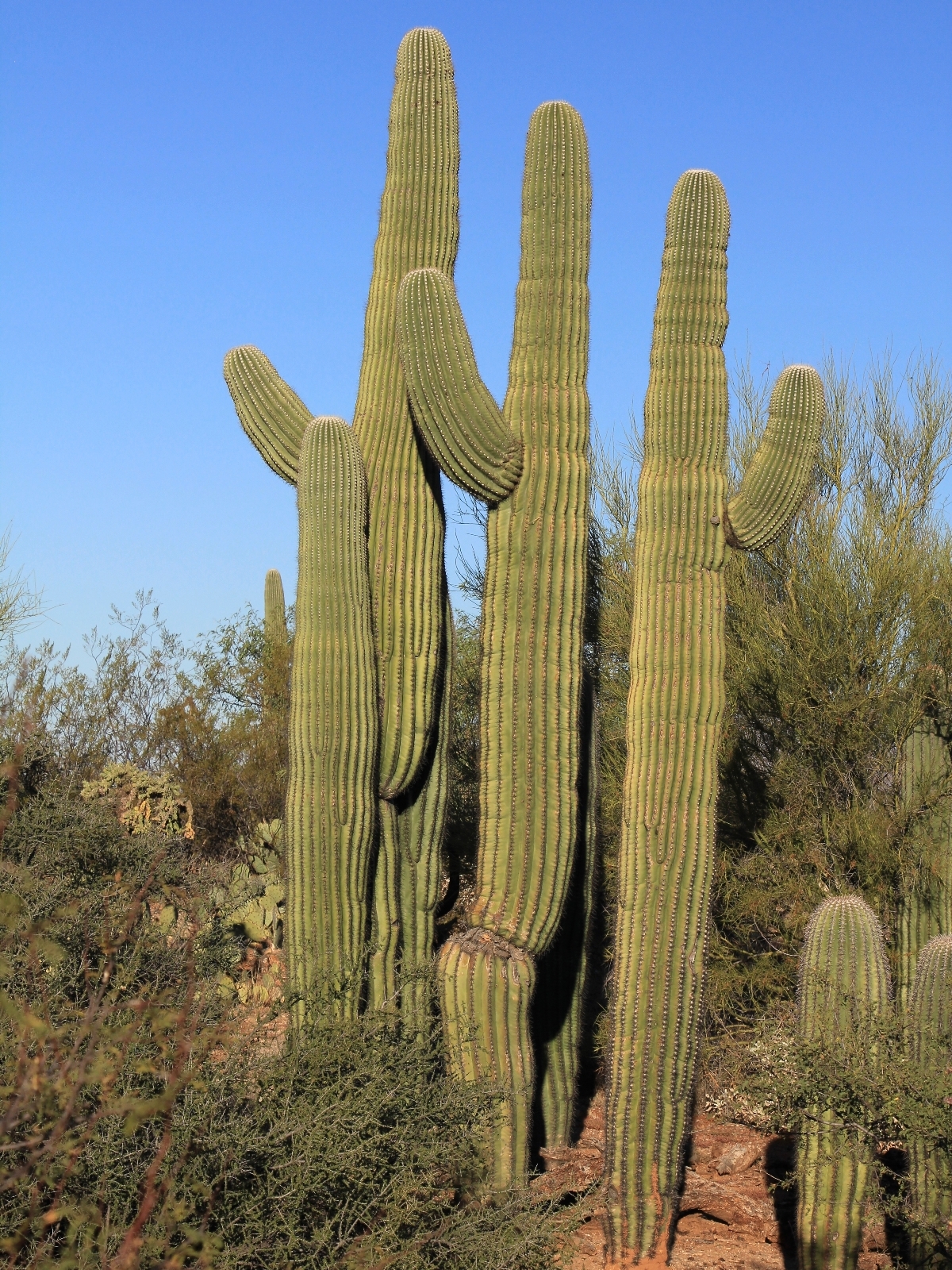






Christmas Day Climb to the Highest Peak in the Tucson Mountain District (Saguaro West)

During our first trip to Arizona in 2012, we visited Saguaro West and hiked the popular trails off the Bajada Loop Drive. When we returned on Christmas Day 2021, we wanted something new and a bit more challenging. The special day seemed like a good time to tackle the tallest peak in Saguaro West, Wasson Peak. We started at the King Canyon Trailhead and made the 1,765 foot climb to the top of Wasson Peak following the King Canyon Trail. We returned via the Norris, Sendero Esperanza, and Gould Mine trails for a 8.0 mile loop. This was a moderately challenging hike that provided spectacular views of Tucson from Wasson Peak. The visitor center was closed for the holiday, but I was able to get my Passport Book stamp the following week when we took our nephew and his girlfriend for a rainy drive along the Bajada Loop.
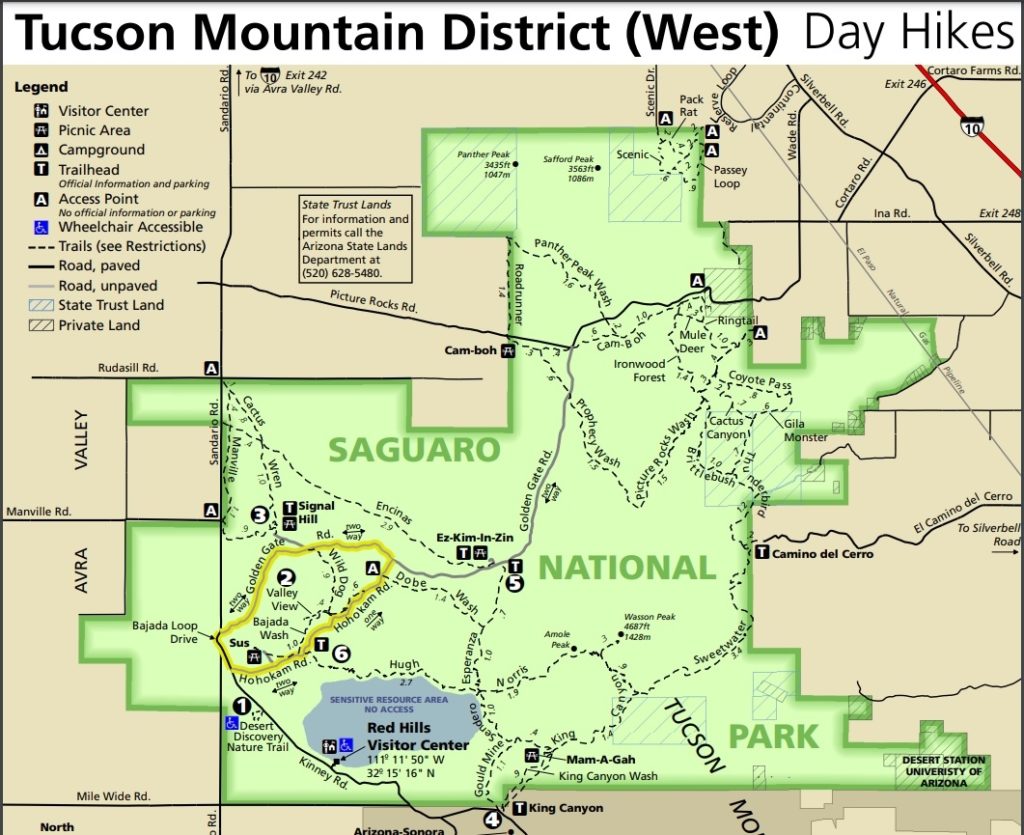
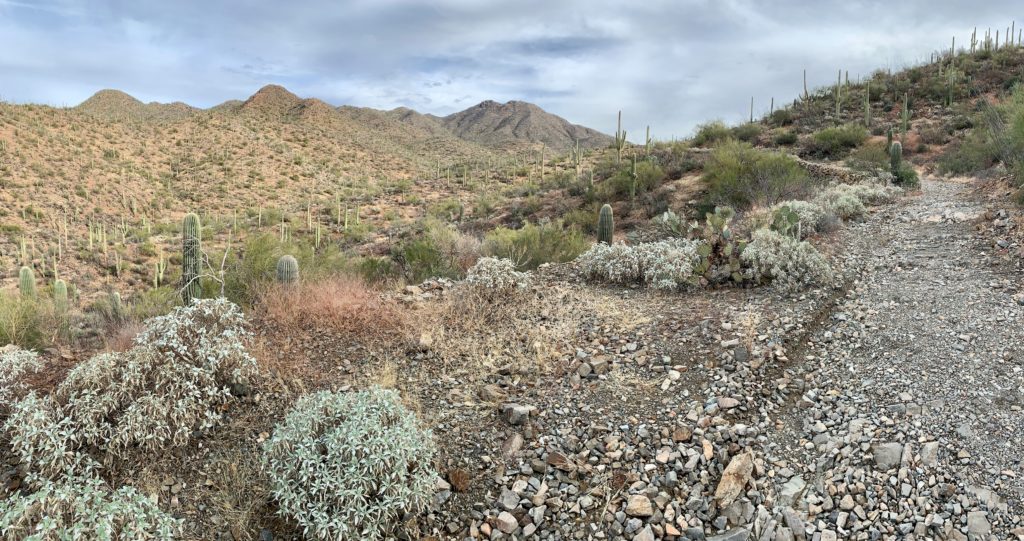




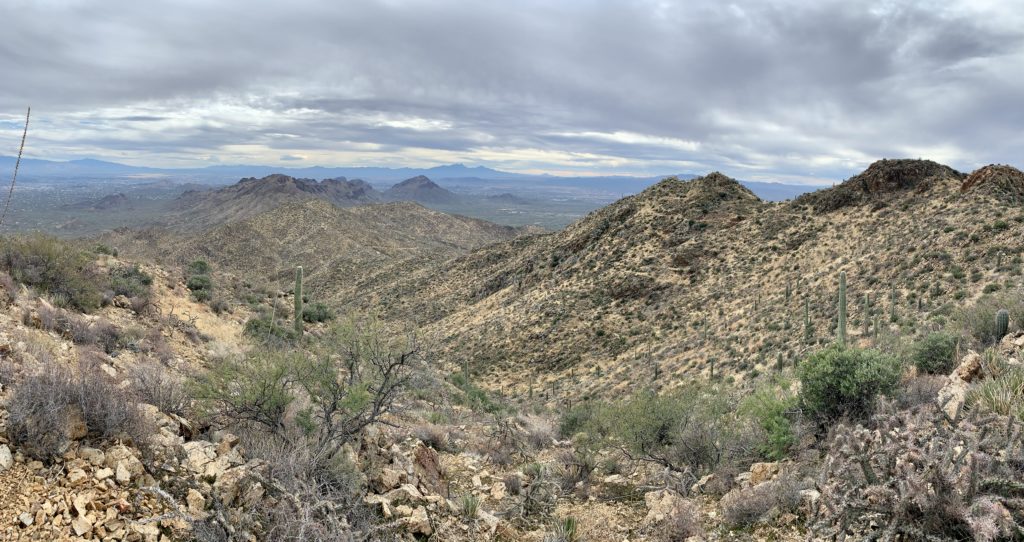
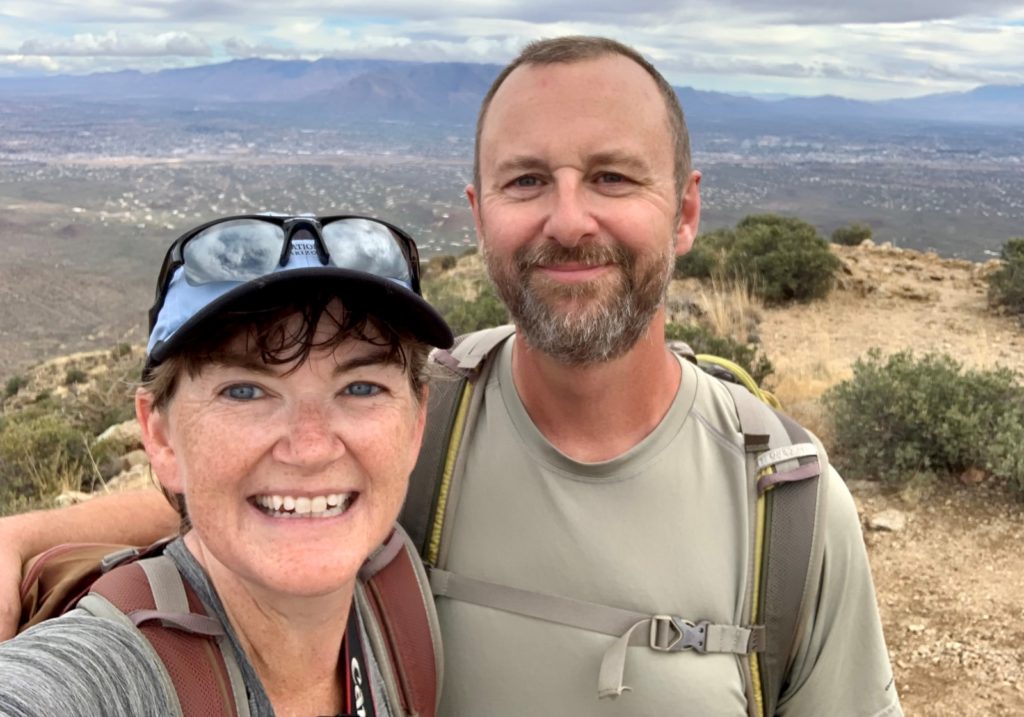




The Adventure Continues
Be sure to join us for our next post as we move to Picacho Peak State Park where our nephew and his girlfriend join us for some adventuring! And don’t forget to check out our Amazon RV and Adventure Gear recommendations. We only post products that we use and that meet the Evans Outdoor Adventures seal of approval. By accessing Amazon through our links and making any purchase, you get Amazon’s every day low pricing and they share a little with us. This helps us maintain this website and is much appreciated!

Thank you for describing cacti for me. I learned more about them than I ever knew there was to know. So interesting!
All of their adaptations and varieties are fascinating!